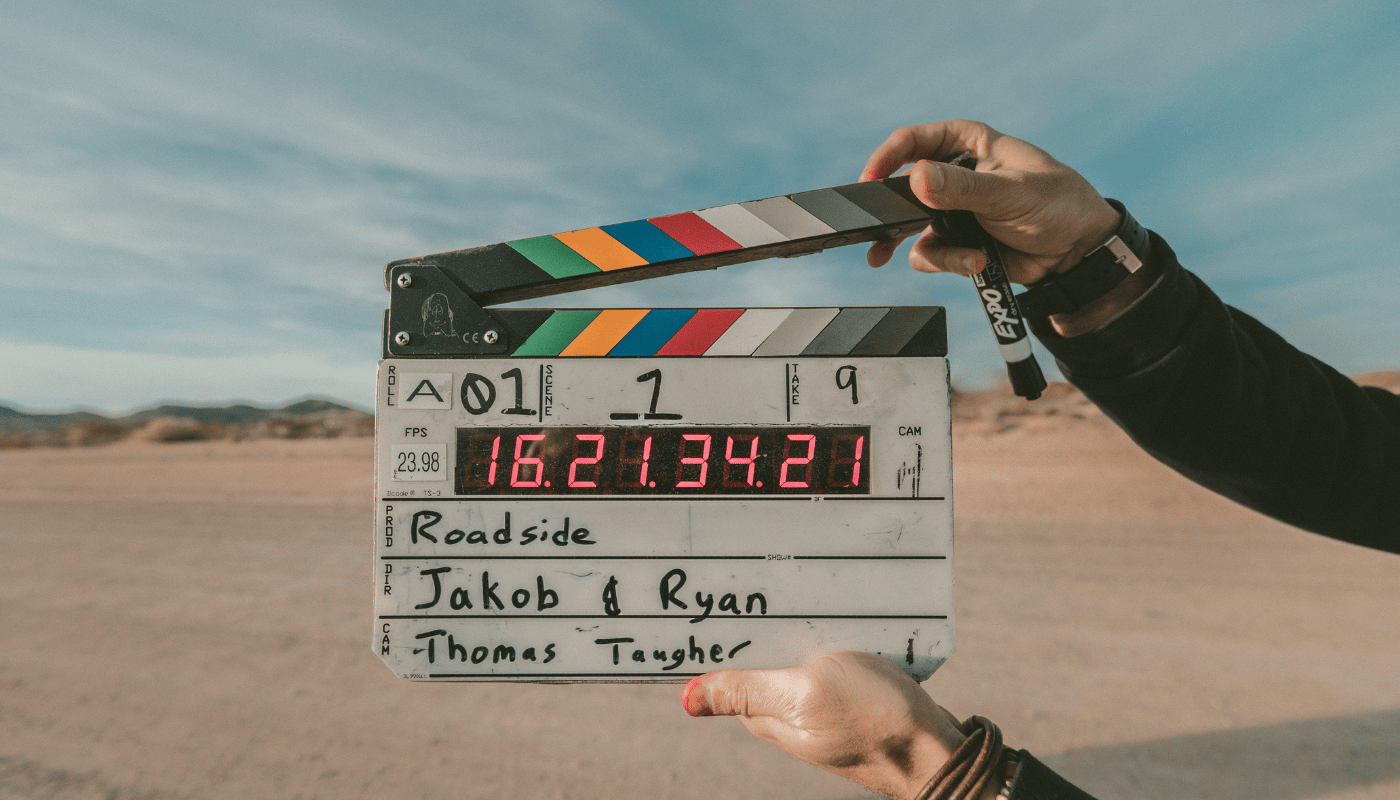“Stand By Me” is a cherished coming-of-age film that has captivated audiences since its release in 1986. Directed by Rob Reiner and based on Stephen King’s novella “The Body,” the movie tells the story of four young friends who embark on a journey to find the body of a missing boy. This heartfelt narrative, combined with memorable performances and beautiful scenery, has made “Stand By Me” a timeless classic. One aspect that significantly contributes to the film’s enduring appeal is its authentic and picturesque filming locations. Fans and movie enthusiasts often seek to visit these iconic sites to relive the magic of the movie. This article provides a comprehensive guide to where “Stand By Me” was filmed, highlighting key locations, additional spots, and detailed information to help you explore these places.
Main Filming Locations
“Stand By Me” was primarily filmed in the Pacific Northwest, specifically in the states of Oregon, California, and Idaho. These locations were chosen for their ability to authentically represent the small-town atmosphere of the fictional Castle Rock, Oregon, where the story unfolds. The natural landscapes, including dense forests, serene lakes, and quaint town centers, played a crucial role in bringing the story to life.
Oregon
Oregon served as the main hub for the film’s production. The state’s diverse and picturesque environments provided the perfect backdrop for the boys’ adventure. The lush forests, rolling hills, and tranquil lakes were instrumental in creating the movie’s nostalgic and adventurous tone. Brownsville, a small town in Oregon, was the primary setting used to depict Castle Rock. The town’s historic downtown area, complete with classic American architecture and rural charm, made it an ideal stand-in for the fictional town.
California
While Oregon was the primary filming location, certain scenes required different landscapes that Oregon could not provide. As a result, California was also utilized, particularly in areas around the Los Angeles region. The state’s versatile environments allowed the filmmakers to capture varied settings necessary for specific parts of the movie. Placer County in California, with its diverse terrains, was one such area that contributed to the film’s visual diversity.
Idaho
Idaho played a supplementary role in the filming process. The state’s unique scenery added variety to the movie’s visual palette. Scenes that required distinct geographical features not readily available in Oregon or California were shot in Idaho. This inclusion provided additional depth to the film’s setting, enhancing the overall atmosphere and authenticity of the story.
Detailed Filming Locations
The production of “Stand By Me” involved several specific towns and landmarks that fans can recognize today. Each location was meticulously chosen to represent different facets of the story, from the boys’ adventurous journey to the intimate moments that shape their friendships.
Brownsville, Oregon
Brownsville was the primary location used to depict Castle Rock. The town’s charming Main Street, with its historic buildings and local shops, provided the perfect environment for the film’s small-town scenes. The Linn County Historical Museum in Brownsville was transformed into the Blue Point Diner, where key interactions between the characters took place. The town’s authentic 1950s feel was preserved, making it an excellent match for the film’s setting.
Cottage Grove, Oregon
Cottage Grove was used for filming the railroad scenes, including the iconic bridge crossing where the boys encounter an oncoming train. The town’s existing train tracks and historic bridges provided the necessary infrastructure for these pivotal moments in the story. The covered bridges in Cottage Grove added to the film’s nostalgic and tense atmosphere during the train scene.
Mount Hood National Forest, Oregon
The Mount Hood National Forest provided the dense woods and winding trails essential for the boys’ journey. The forest’s expansive and untouched natural beauty was perfect for capturing the essence of the boys’ adventurous trek through the wilderness. The serene environment of Mount Hood National Forest added a layer of realism to the film, making the journey feel genuine and immersive.
Eugene, Oregon
Eugene was used for some of the more urban settings in the film, such as the junkyard scenes. The outskirts of the city offered the necessary backdrop for these scenes, providing a contrast to the more rural and natural settings used elsewhere in the movie. The inclusion of Eugene helped diversify the film’s visual narrative, showcasing different aspects of the boys’ environment.
Lake Britton, California
Lake Britton in California was the location for the famous bridge scene where the boys cross and encounter the oncoming train. The bridge near Lake Britton provided the perfect setting for this high-tension moment, with its scenic views and authentic railroad infrastructure. Although the bridge is no longer accessible to pedestrians, the surrounding area remains a beautiful spot for fans to visit and reflect on the film’s memorable scenes.
Burney Falls State Park, California
Burney Falls State Park offered additional natural scenery for the film. The park’s stunning waterfalls and lush landscapes were used to enhance the visual appeal of the movie. The natural beauty of Burney Falls added depth to the film’s outdoor scenes, contributing to the overall atmosphere of adventure and discovery.
Idaho Scenic Areas
In Idaho, specific scenic areas were chosen to capture unique landscapes required for certain scenes. These areas provided the distinct geographical features that could not be found in Oregon or California, adding variety and authenticity to the film’s setting. The inclusion of Idaho locations ensured that each scene had the appropriate backdrop to support the narrative.
Key Filming Locations
Here is a list of the key filming locations for “Stand By Me”:
- Brownsville, Oregon – Represented the fictional town of Castle Rock.
- Cottage Grove, Oregon – Used for the railroad and bridge scenes.
- Mount Hood National Forest, Oregon – Provided the forest setting for the boys’ journey.
- Eugene, Oregon – Location for the junkyard scenes and urban settings.
- Placer County, California – Specific outdoor shots requiring varied landscapes.
- Lake Britton, California – The location of the famous bridge crossing scene.
- Burney Falls State Park, California – Provided additional natural scenery.
- McCloud River Railroad, California – Used for train scenes.
- Idaho Scenic Areas – Unique landscapes for particular moments in the film.
Filming Locations and Corresponding Scenes
| Filming Location | Scene Description |
| Brownsville, Oregon | Main town scenes, including the train station and local shops. |
| Cottage Grove, Oregon | Railroad tracks and bridge scenes with the oncoming train. |
| Mount Hood National Forest | Forest scenes depicting the boys’ journey and challenges. |
| Eugene, Oregon | Junkyard scenes and other urban settings. |
| Placer County, California | Specific outdoor shots requiring varied landscapes. |
| Lake Britton, California | The iconic bridge crossing scene. |
| Burney Falls State Park, California | Additional natural scenery for the journey. |
| McCloud River Railroad, California | Train scenes requiring authentic railway settings. |
| Idaho Scenic Areas | Unique landscapes for particular moments in the film. |
Additional Filming Locations
Beyond the primary filming sites, several other locations contributed to the making of “Stand By Me.” These spots, while not as prominent, added depth and variety to the film’s setting, ensuring a rich and immersive experience for viewers.
- Veneta, Oregon: Used for certain outdoor scenes requiring open fields and expansive landscapes.
- Franklin, Oregon: Provided rural landscapes and farmland backdrops, enhancing the film’s small-town feel.
- Oakridge, Oregon: Featured in scenes with winding roads and natural vistas, adding to the film’s adventurous tone.
- Shasta County, California: Utilized for additional forest scenes and river settings, contributing to the film’s diverse environments.
- McCloud, California: Used for train depot scenes and railway shots, adding authenticity to the railroad aspects of the story.
Visiting the Filming Locations Today
For fans eager to experience the magic of “Stand By Me” firsthand, many of the filming locations remain accessible and retain much of their original charm. Visiting these sites offers a unique opportunity to connect with the film’s legacy and immerse oneself in the environments that brought the story to life.
Brownsville, Oregon, remains much like it was during the filming of “Stand By Me.” Visitors can stroll down Main Street, recognizing buildings and storefronts from the movie. The Linn County Historical Museum, which was transformed into the Blue Point Diner for the film, is open to the public. The town occasionally hosts events and screenings related to the movie, celebrating its connection to “Stand By Me.”
The railroad tracks near Cottage Grove, Oregon, are still present, though safety precautions should be taken when visiting. The area offers scenic views and is part of the Covered Bridges Scenic Bikeway, which includes several historic bridges. Fans can explore the bridges and imagine the tension of the train scene from the movie.
Mount Hood National Forest is open to the public for hiking, camping, and exploring. Visitors can walk the same trails the boys took on their journey, immersing themselves in the natural beauty that served as the film’s backdrop. The forest’s serene environment provides a perfect escape for those looking to experience the wilderness depicted in the movie.
The bridge used in the iconic crossing scene is located near Lake Britton in Burney Falls State Park, California. While the bridge is no longer accessible to pedestrians due to safety concerns, the surrounding area offers stunning views and outdoor activities. Visitors can enjoy the park’s waterfalls, hiking trails, and picturesque landscapes that mirror the film’s scenic moments.
Placer County, California, with its varied landscapes, continues to offer beautiful outdoor settings. Fans can explore the diverse terrains that were featured in the film, from wooded areas to open fields. The county’s natural beauty remains a testament to the versatile locations used in “Stand By Me.”
Burney Falls State Park is a popular destination for nature lovers and fans of the movie. The park’s stunning waterfalls and lush surroundings provide ample opportunities for photography and exploration. Visitors can appreciate the natural beauty that enhanced the film’s outdoor scenes.
Some local tour companies offer guided visits to the filming locations of “Stand By Me.” These tours provide historical context, behind-the-scenes stories, and insights into the production process. Guided tours can enhance the experience by highlighting lesser-known facts about the movie and its filming locations, making the visit more informative and engaging.
Impact of Filming Locations on the Movie
The choice of filming locations had a profound impact on the success and emotional resonance of “Stand By Me.” The authentic and picturesque settings enhanced the film’s storytelling, providing a realistic and immersive environment that mirrored the characters’ experiences.
Authenticity and Realism
Filming on location in real towns and natural settings added a layer of authenticity to the movie. The use of actual places rather than constructed sets made the story feel more genuine, allowing audiences to connect deeply with the characters and their journey. The natural beauty of Oregon, California, and Idaho provided a timeless backdrop that captured the essence of small-town America in the 1950s.
Emotional Resonance
The scenic landscapes and quaint town centers contributed to the film’s emotional depth. The forests, lakes, and streets depicted in the movie evoke a sense of nostalgia and innocence, reflecting the boys’ transitional phase from childhood to adolescence. The settings played a crucial role in conveying the themes of friendship, adventure, and self-discovery that are central to the story.
Enhancing the Narrative
The diverse filming locations allowed the filmmakers to craft a visually engaging narrative. The journey through the wilderness, the challenges faced in the forest, and the return to the familiar town were all supported by the chosen settings. The natural environment influenced the pacing and tone of the movie, creating a sense of adventure and uncertainty that mirrored the characters’ inner struggles.
Visual Appeal
The picturesque scenery of the filming locations added to the movie’s visual appeal. The lush forests, serene lakes, and charming town centers provided stunning visuals that captivated audiences. The beauty of the settings enhanced the overall aesthetic of the film, making it visually memorable and appealing.
Comparison of the Real Locations to the Fictional Setting
While Castle Rock is a fictional town, the real locations used in “Stand By Me” closely resemble the idyllic small-town America depicted in the film. The seamless integration of various towns and natural areas created a cohesive setting that feels authentic and believable.
Real vs. Fictional
The filmmakers carefully selected real towns and natural landscapes that embodied the characteristics of Castle Rock. Brownsville, Oregon, with its historic downtown and rural charm, perfectly matched the fictional town’s portrayal. The use of real locations allowed for a more authentic representation of the story’s setting, avoiding the artificiality that can come with constructed sets.
Architectural and Natural Consistency
The architecture of the towns and the natural landscapes were consistent with the film’s time period and setting. The classic American homes, local shops, and preserved historical buildings contributed to the film’s nostalgic atmosphere. The natural environments, such as the dense forests and tranquil lakes, provided a timeless quality that aligned with the story’s themes.
Community and Atmosphere
The real towns used in filming had a welcoming and tight-knit community feel, which was essential for depicting the camaraderie among the boys. The interactions between characters in these authentic settings felt genuine, enhancing the overall narrative and making the friendships portrayed in the film more relatable.
The Legacy of “Stand By Me” and Its Filming Locations
“Stand By Me” has left a lasting legacy, both as a beloved film and through its impact on the filming locations. The movie continues to attract fans who wish to visit the places that brought the story to life, ensuring that the film’s legacy endures.
The filming of “Stand By Me” has had a positive impact on the local economies of the filming locations. Brownsville, Oregon, in particular, has seen a boost in tourism, with fans visiting the town to explore the sites featured in the movie. Local businesses benefit from the increased attention, and the town embraces its connection to the film through various events and promotions.
The movie’s legacy is intertwined with the identity of the filming locations. Annual events, such as movie screenings and festivals, celebrate “Stand By Me,” fostering a sense of community pride and cultural significance. These events keep the film’s memory alive and attract new generations of fans.
The continued popularity of “Stand By Me” has encouraged the preservation of its filming locations. Efforts to maintain the authenticity and charm of these sites ensure that they remain recognizable and accessible to fans. Preservation helps maintain the historical and cultural value of the locations, allowing future visitors to experience the magic of the film.
“Stand By Me” demonstrated the importance of authentic locations in storytelling, influencing how future films approach location scouting. The success of the movie underscored the value of choosing real settings that enhance the narrative and emotional impact of the story. Filmmakers continue to seek out genuine locations that can bring their stories to life in a meaningful and visually appealing way.
The film’s legacy continues to thrive through its memorable locations, ensuring that its impact remains strong for generations to come.
Conclusion
“Stand By Me” remains a beloved classic, not only for its heartfelt story and memorable characters but also for its authentic and picturesque filming locations. Primarily shot in Oregon, with contributions from California and Idaho, the movie beautifully captures the essence of small-town life and the adventurous spirit of youth. The carefully selected locations provided the perfect setting for the boys’ journey, enhancing the film’s emotional depth and visual appeal.
For fans and visitors alike, exploring these filming sites offers a chance to connect with the movie on a deeper level. From the charming streets of Brownsville to the serene forests of Mount Hood, each location holds a piece of the film’s legacy. Whether you’re reminiscing about the movie or discovering it for the first time, understanding where “Stand By Me” was filmed adds an extra layer of appreciation for this enduring classic.
By visiting these sites, fans can immerse themselves in the environments that shaped the story, experiencing firsthand the beauty and authenticity that made “Stand By Me” a timeless masterpiece. The film’s legacy continues to thrive through its memorable locations, ensuring that its impact remains strong for generations to come.




